Books on architecture and design coordinating discourse and knowledge
by Jincy IypeDec 12, 2023
•make your fridays matter with a well-read weekend
by Jincy IypePublished on : Jan 08, 2024
What were some determinants that specified the creative and current gestalt of architecture, journeying from the fiercely standardised 'analogue' to the hybridised 'digital'? When did the prolific integration of electronic computation occur, leading architects to employ digital tools within their practices, and what did this restructuring entail?
The Internet of Things and the age of the digital dawned at a frantic and formidable pace, signalling and affecting a substantial shift in the way we viewed, accessed, and navigated our world, and the same holds true for contemporary architecture practises—for one, during the 1990s and 2000s, the rapid development of digital technology changed the way buildings were brought to life: drawing boards replete with laboriously hand-drawn, mammoth sized sheets were replaced by computer-aided, digitally-achieved, printed diagrams and models.
Hand and Machine. Architectural drawings at the National Museum of Art, Architecture and Design in Oslo, Norway, performs and leads with a similar premise: the architectural exhibition on view from November 17, 2023 - March 31, 2024, displays drawings conceived by architects between the years 2008–2023, “a period bookended by two global crises: the financial crisis and the coronavirus pandemic,” according to the host.
"The financial crisis of 2008 caused serious economic difficulties for many architects, but it also led to a period of reflection and reaction. The exhibition shows how many architects reverted to analogue forms of expression, collective working arrangements, community engagement, and a local focus in the wake of the crisis," they continue.
How did these crunches redefine, reform, or reclaim the nature and practice of conceiving architectural drawings?
Explosive technological development and various global crises have left their mark on society in recent decades. What impact do such upheavals have on architects and the way they work? – National Museum of Art, Architecture and Design, Norway
"The title Hand and Machine refers to a tendency in recent years, [of] digital and hand-made approaches to architectural drawing merging into newer, more hybrid forms—a tendency we take as a starting point for the exhibition,” Joakim Skajaa, architecture curator at the National Museum of Art, Architecture and Design, tells STIR.
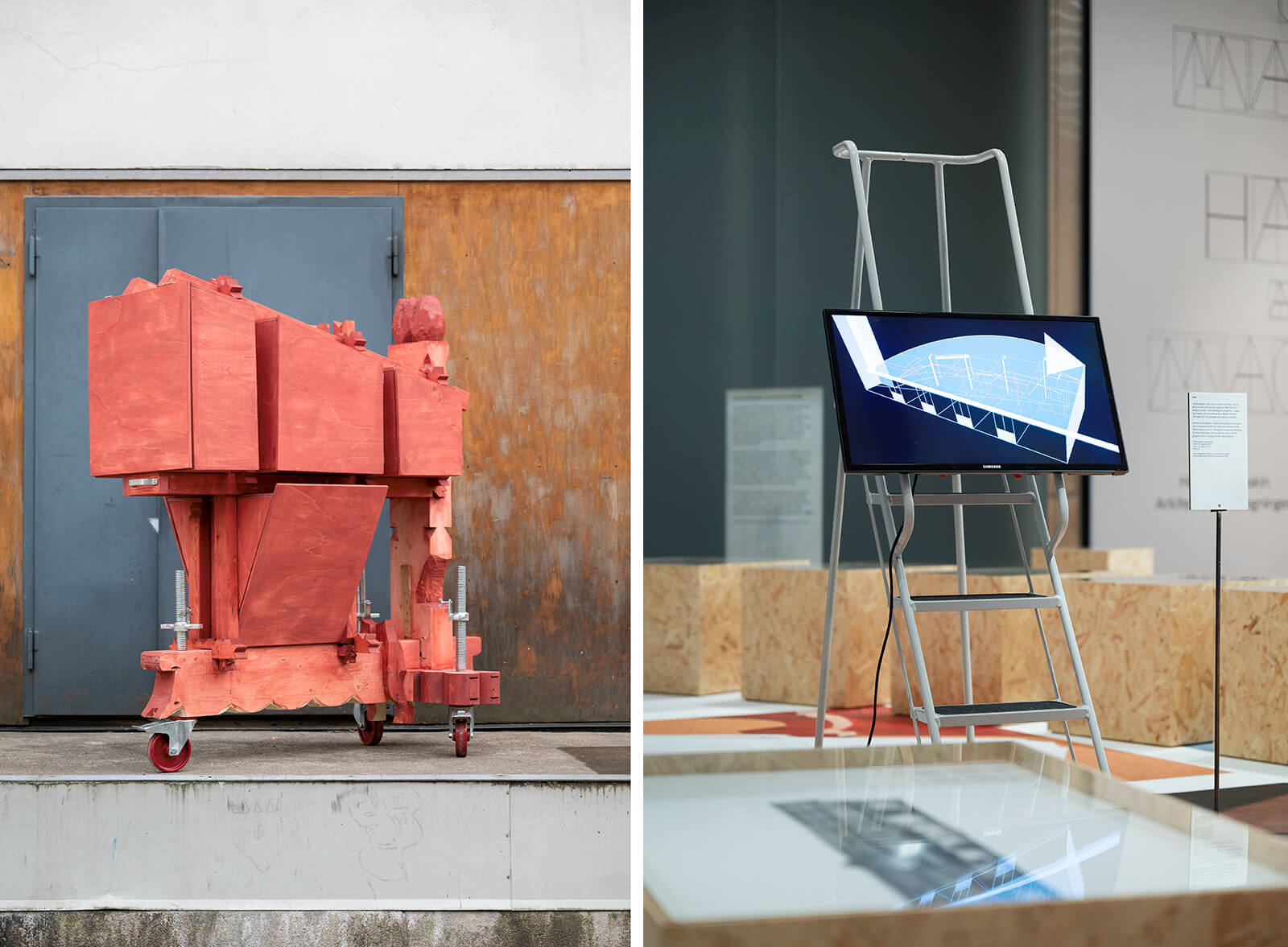
The exhibition floor is strewn and covered with massive images by Austrian-Norwegian photographer Max Creasy, which were obtained during visits to the studios of some of the featured architects in Hand and Machine. These photographs, mostly abstractly arranged and presented, showcase recognised paraphernalia such as free-form sketches, pencils, rulers, crumpled papers, and more, depicting a slightly informal, yet welcoming setting that allows visitors to roam and engage at fancy. The featured works are presented across various means, some staged on canvases, or blinking virtually through screens attached to ladders and scaffoldings, safe behind glass cases, resting on benches, against or on timber tables and chairs, or pinned attentive on walls.
The intent and idea of the exhibition design (which is also accompanied by a catalogue published by the Museum), according to Skajaa, “is to make something that is informal and quite playful, while at the same time, giving visitors the chance to experience the drawings up close and on the table. As in the architect's office, we have also made a photographic print on the floor with photos from the offices, trying to give the visitors a little glimpse of the context around the creation of these drawings.”
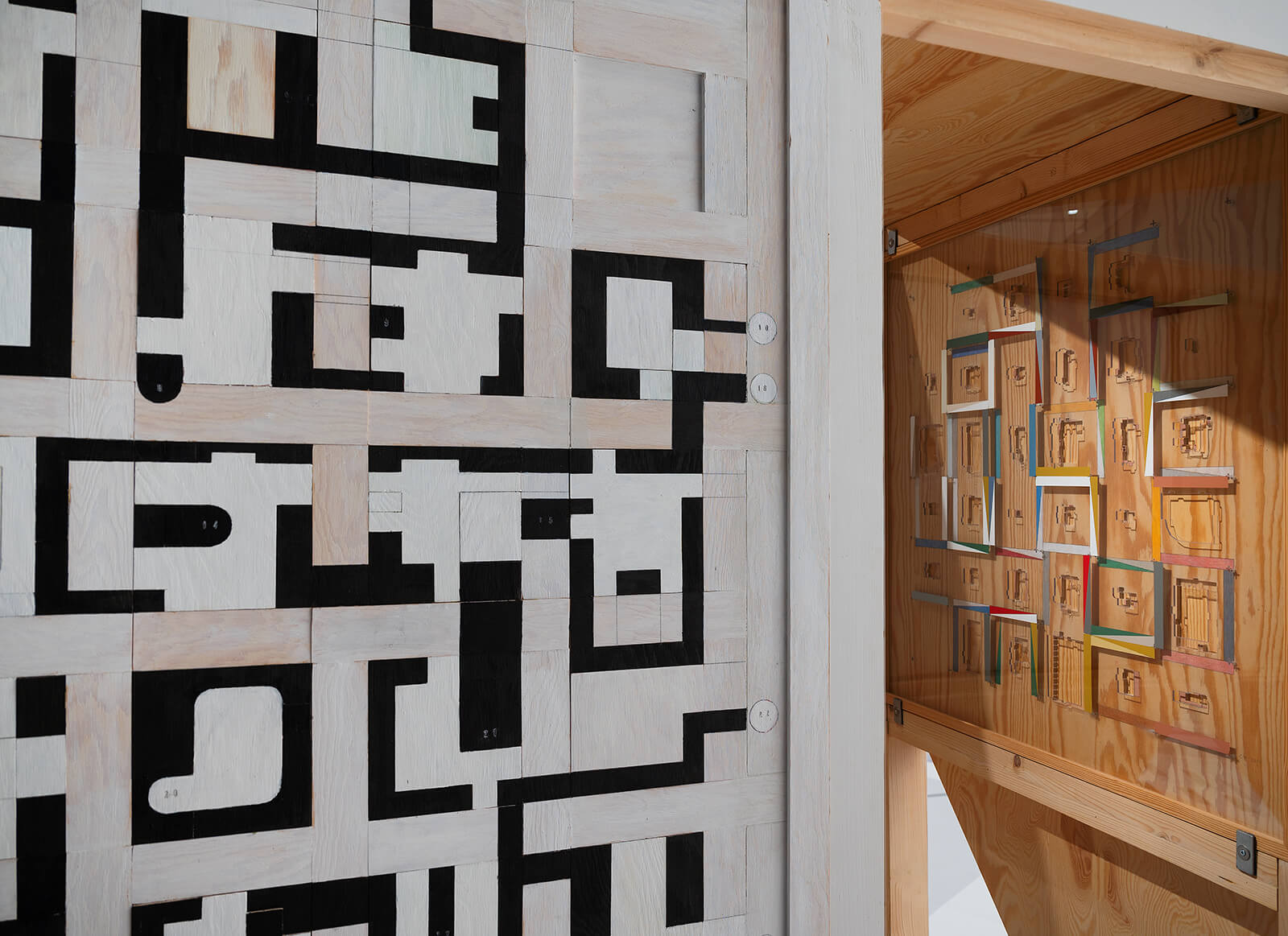
The National Museum of Art, Architecture and Design is the largest art museum in the Nordics, boasting a comprehensive collection containing 4,00,000 objects ranging from antiquity to the present day, which includes paintings, sculptures, drawings, textiles, furniture designs, as well as architectural models, and a diverse programme of temporary exhibitions and events.
Hand and Machine. Architectural drawings includes illustrations and drawings by around 40 Norwegian and international architectural firms, all with a common denominator: a critical attitude towards "the aesthetics borne from a computer." Here, the architects employ the innate freedom of the traditional (read: conventional, old school) methods and styles of expression that genuinely defined and permeated the praxis for a weighty period, further fine-tuned through digital tools and distributed through social media channels such as Instagram. Moreover, the design exhibition is accompanied by three installations by architectural offices LCLA, Sostra100, and Secretary, which investigate the role of drawings in the architectural discipline—“and of architecture in society,” the museum asserts.
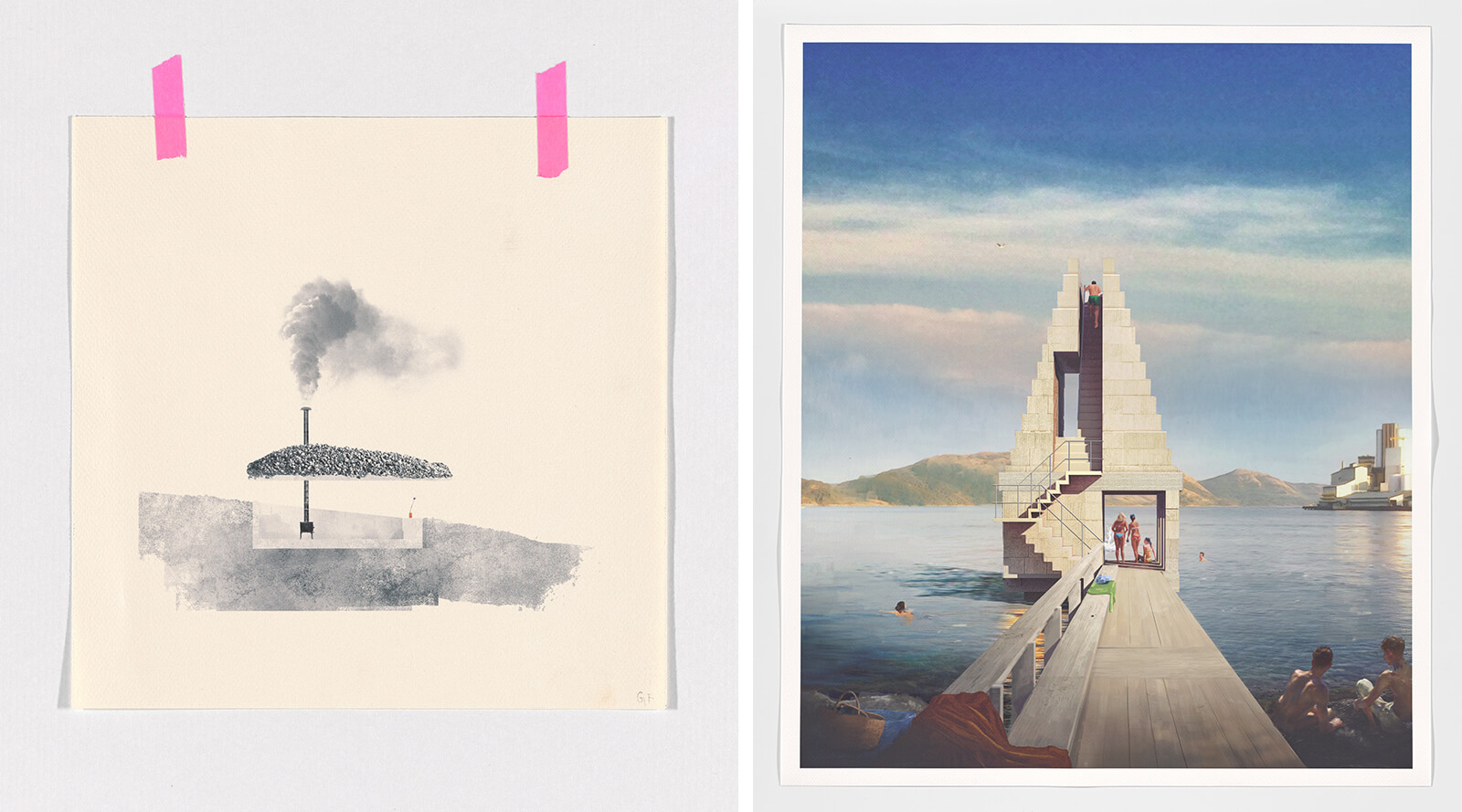
"The exhibition takes as its starting point, an interest in architectural drawings, and how they act both as a way to communicate and as a place for architects to develop new ideas and thoughts. We were interested in what tendencies we could find in [these] drawings, and we found a lot,” Skajaa indicates. “Not only did it emphasise how architects work critically with their own tools, but also, approaches to other societal topics such as politics, economics and the climate crisis can be read in the drawings,” he adds.
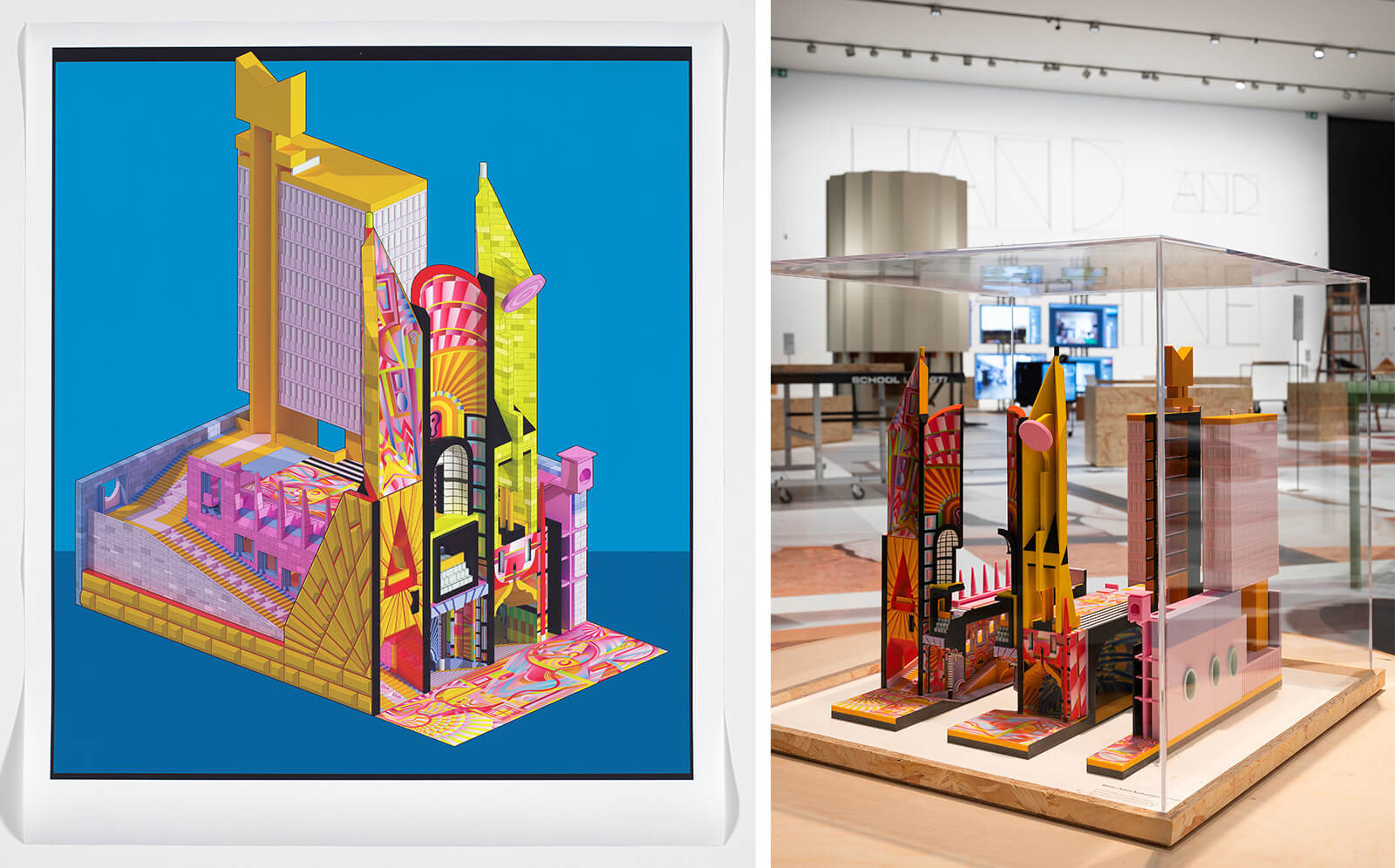
Expounding on the intent behind selecting and showcasing architectural drawings from this particular period of 15 years (2008–2023), Skajaa explains, “We wanted to make an exhibition about contemporary architecture that discussed how architects are working today, as well as the tools they employ. All displayed works are made in the period between 2008 and 2023 and relate to computer aesthetics in critical manners and perspectives. Many have a seemingly hand-drawn and analogue look, that stands in strong contrast to the rendered architectural drawings that were prevalent in the early 2000s. In the exhibition, we trace this turn to the financial crisis in 2008, a global event that left many architects without work. For many architects, the aftermath of the 2008 crisis was a time for reflection, reaction, and experimentation, with new forms of working and implementing, and we looked at how this was expressed in their drawings.”
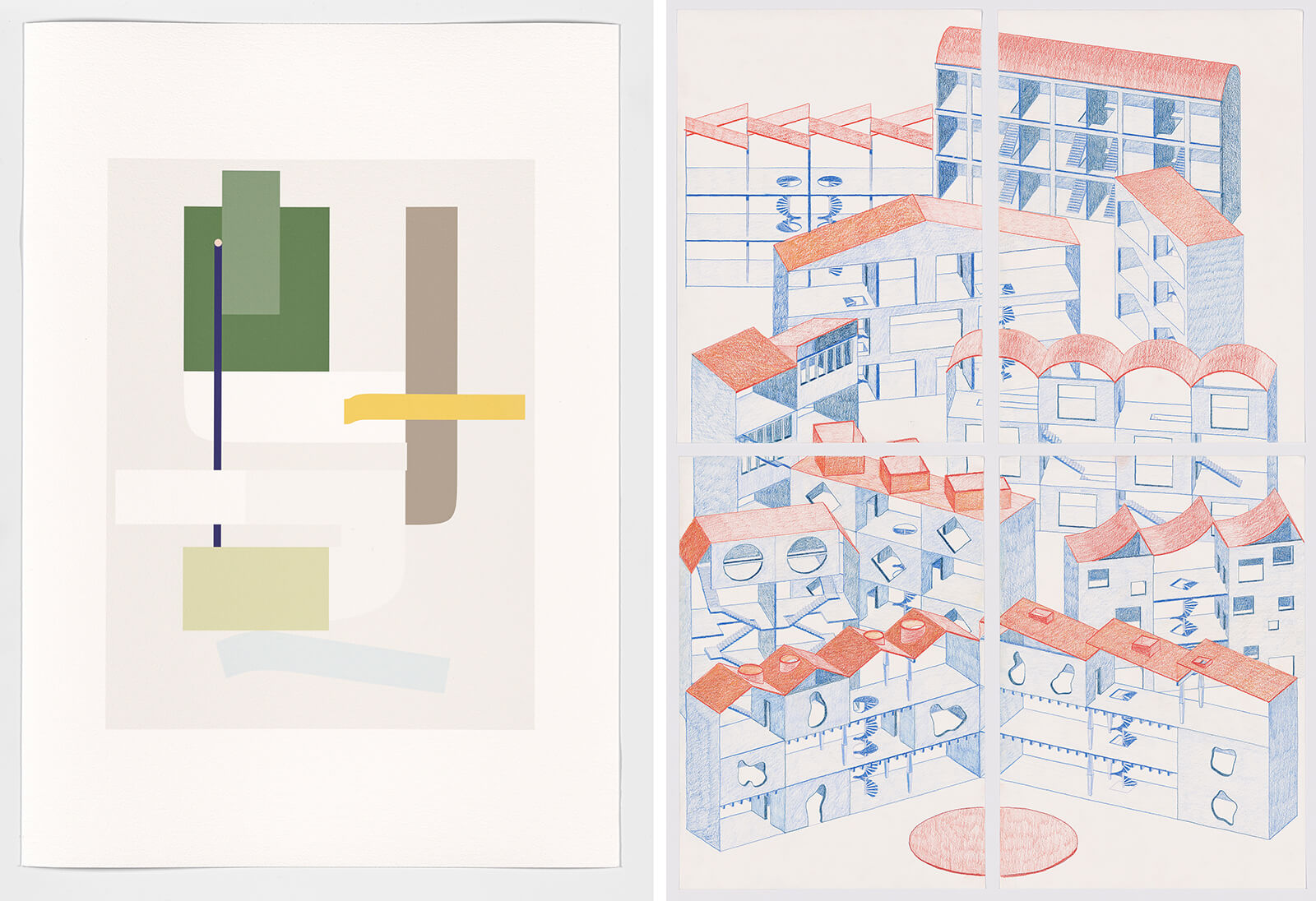
The curator was also led by a quest to understand these perceptions, about this period especially, and how they consequently reflected in the drawings. “That could primarily be a question of aesthetics, but just as much as a question of methodology. Of course, it then became a starting point for a larger discussion about the architects' role in society. What kind of buildings should they build, and for whom, with what materials... Important questions that are not answered in the exhibition, but it is possible to see the questions appear in the drawings themselves,” says Skajaa.
Participants included Atelier Adam Nathaniel Furman, Dyvik Kahlen Architects, Gartnerfuglen Arkitekter, Hesselbrand, Sam Jacob, LCLA OFFICE, OMMX, Point Supreme, Philipp Schaerer, Vardehaugen & Arkitekt, and more—offices and creative individuals with varied experiences and specialities—some established, successful ones with serious built work across typologies and scales, while others who are emerging, young, inexperienced in comparison yet brimming with promise, operating from more conceptual liminalities. “It is really, the format of the drawing, common to all architects, that makes it possible to show them all together in one exhibition,” Skajaa relays.
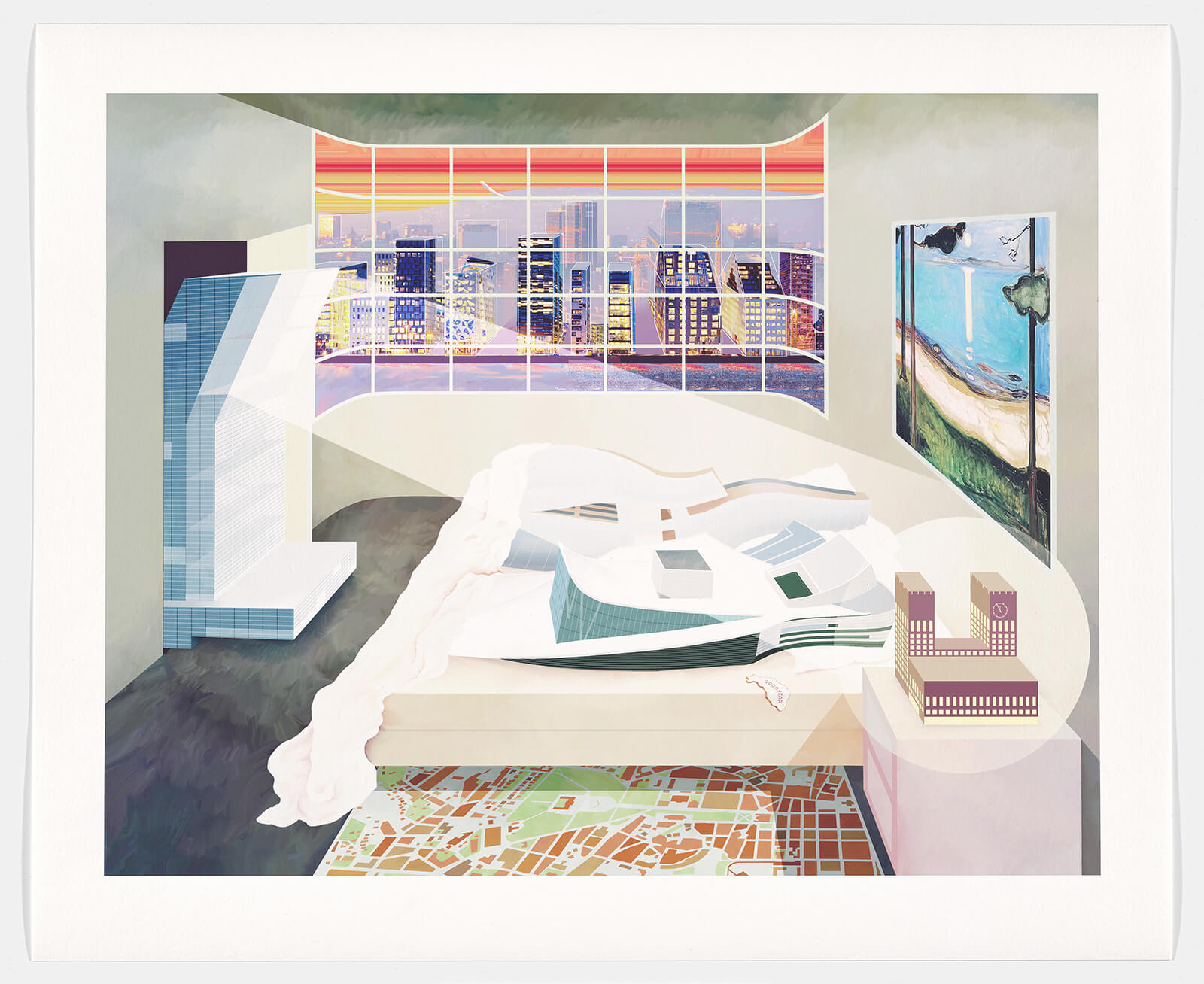
Through Hand and Machine. Architectural drawings, the exhibited entities reveal a more tangible expression, which is more or less, a hybrid of the analogue and digital. According to Skajaa, most have in some way lived in the computer or other digital environments, and therefore, it did not make sense to instil a rigid parameter separating the two within the exhibition design (which is carried out by Kellenberger-White, who also conceived its graphic design identity).
The quantitative, titan, and diagnosed shift in the way digital technologies and digital tools furthered the architectural discipline, reforming the very culture and manner in which it is practised, is not solely happenstance. Now, it is unfathomable to conceive projects without the intervention of said technologies, a consequential component of innovation, a natural growth. Vis a vis Hand and Machine, a line of query presents itself, wherein the significance of manual drawings is not necessarily pitted against digitally generated ones, but is instead, revealed and examined as something that was a lived reality mere years ago and which finds imprints now, intentional and otherwise, in an evolved, crossbred, and ubiquitous form. In tandem, it also implores a lean towards the practised, authentic, and unique human skill of drawing by hand, of image-making and in essence, of storytelling, enabled by community and proper engagement, bound by hand, ink, and paper.
‘Hand and Machine. Architectural Drawings’ is on view till March 31, 2024, at the Light Hall, National Museum of Art, Architecture and Design in Norway.
by Anushka Sharma Oct 06, 2025
An exploration of how historic wisdom can enrich contemporary living, the Chinese designer transforms a former Suzhou courtyard into a poetic retreat.
by Bansari Paghdar Sep 25, 2025
Middle East Archive’s photobook Not Here Not There by Charbel AlKhoury features uncanny but surreal visuals of Lebanon amidst instability and political unrest between 2019 and 2021.
by Aarthi Mohan Sep 24, 2025
An exhibition by Ab Rogers at Sir John Soane’s Museum, London, retraced five decades of the celebrated architect’s design tenets that treated buildings as campaigns for change.
by Bansari Paghdar Sep 23, 2025
The hauntingly beautiful Bunker B-S 10 features austere utilitarian interventions that complement its militarily redundant concrete shell.
 surprise me!
surprise me!
make your fridays matter
SUBSCRIBEEnter your details to sign in
Don’t have an account?
Sign upOr you can sign in with
a single account for all
STIR platforms
All your bookmarks will be available across all your devices.
Stay STIRred
Already have an account?
Sign inOr you can sign up with
Tap on things that interests you.
Select the Conversation Category you would like to watch
Please enter your details and click submit.
Enter the 6-digit code sent at
Verification link sent to check your inbox or spam folder to complete sign up process



by Jincy Iype | Published on : Jan 08, 2024
What do you think?